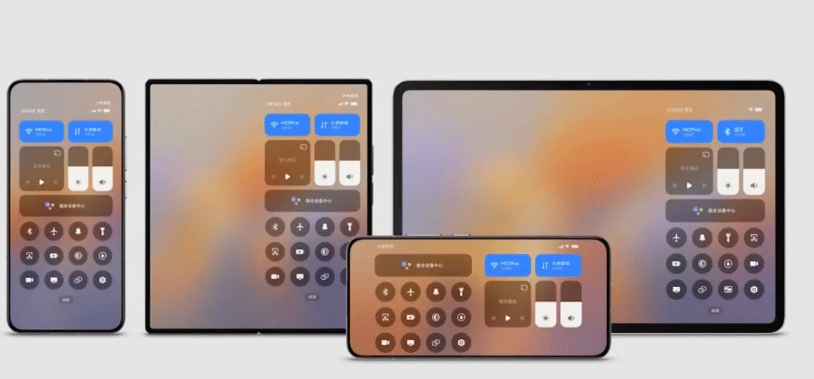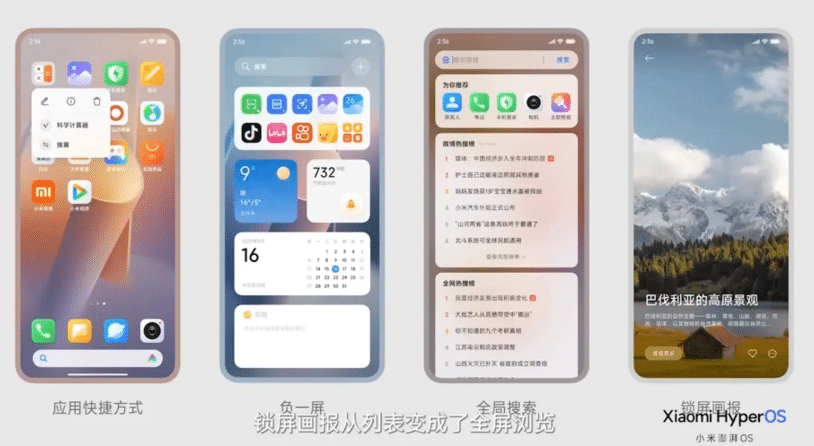During the ongoing Xiaomi HyperOS experience communication meeting, the host unveiled the revamped interface of HyperOS, asserting that “all features have undergone a restructuring, presenting the system with an entirely new appearance.” Specifically, Xiaomi highlighted the pivotal execution of “Desktop Reconstruction,” “Settings Reconstruction,” and “System Framework Reconstruction.
On the desktop, the presenter overhauled the control center, categorizing its original functions based on type. They proclaimed to have reorganized these functions “by the most frequently employed method, easily accessible by hand.” This, they claimed, facilitates one-handed control for the most frequently used functions.
Furthermore, Xiaomi asserted the restructuring of components such as the “system status bar” and “notification bar.” The negative screen, global search, and other elements have been updated to adhere to new specifications. The lock screen pictorial has transitioned to full-screen browsing, with the added feature of rotating wallpapers.
The official also contended that HyperOS’s settings page underwent a comprehensive adjustment. It is purported that the adjustments not only unified the style but also streamlined a multitude of functions, providing a more invigorating appearance to the settings homepage.
Concerning the system application framework, HyperOS has enhanced the adaptability of the system across various screen sizes. The official introduced the concept of a “flexible framework,” enabling devices of diverse sizes to maximize screen information and adapt freely based on user preferences.
Read Also: Xiaomi HyperOS Experience Communication Meeting Starts on December 7




